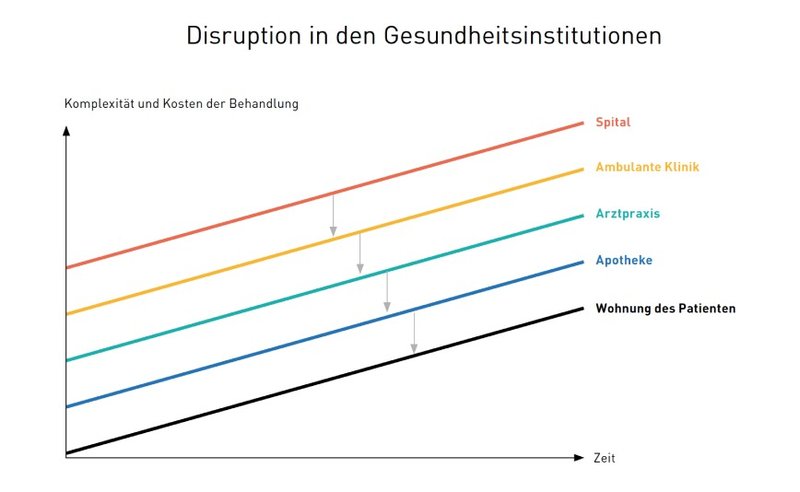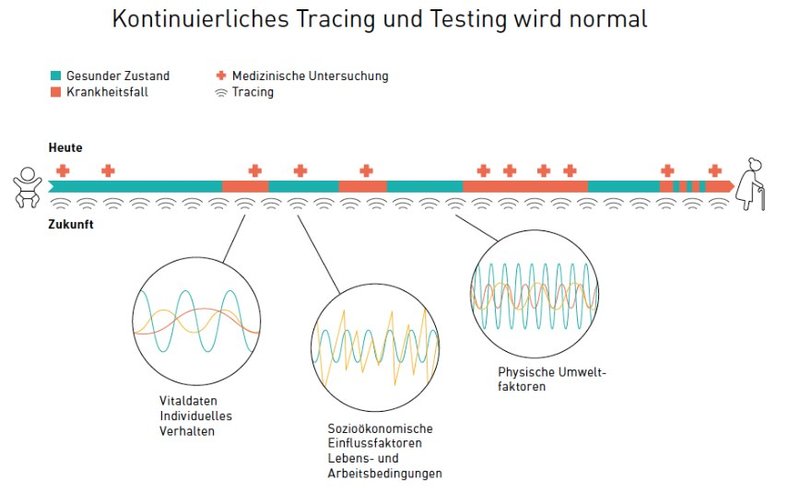Der nachfolgende Text basiert auf einem Auszug aus der GDI-Studie «Prävention im Umbruch», die über unsere Website bezogen werden kann.
Die Pandemie veränderte eingespielte Tagesabläufe. Das betraf auch körperliche Aktivität und Sport. So verwundert es nicht, dass sich Menschen weniger bewegen, wenn sie zu Hause bleiben sollen. Das GDI analysierte eine Reihe von Studien aus der ganzen Welt. Tatsächlich konstatierten die meisten eine Reduktion körperlicher Aktivität. Doch die Resultate der Studien sind nicht überall gleich (siehe Abbildung). Das liegt zum einen daran, dass die Lockdown-Regelungen pro Land unterschiedlich waren (in Paris durfte man im ersten Lockdown 2020 zwischen 10 und 19 Uhr nicht joggen). Zum anderen wurden in den Untersuchungen unterschiedliche Typen von Bewegung abgefragt (z. B. Sport oder Spazierengehen).
![]()
Im Schnitt ergibt sich, dass sich von fünf Personen eine mehr, zwei etwa gleich viel und zwei weniger bewegten. Der Lockdown verleitete also nicht alle gleichermassen zum Nichtstun – auch nicht in Ländern mit strengen Kontaktbeschränkungen. Zwar waren gewisse Möglichkeiten, Sport zu treiben, durch die Schliessung von Fitnesscentern oder Fussballclubs nicht mehr gegeben. Einige Menschen haben jedoch andere Wege gefunden, dies zu kompensieren. Sinnbildlich dafür ist der Anstieg der Google-Anfragen nach Begriffen wie «Joggingschuhe» oder «Yogamatte» zu Beginn des Lockdowns Ende März 2020 (siehe Abbildung).
Warum aber unterscheiden sich die Ergebnisse der einzelnen Studien so stark? Zum einen hat das sicherlich mit unterschiedlichen Situationen in den jeweiligen Ländern zu tun. Es mag aber auch mit dem Zeitpunkt der Messung zusammenhängen. Denn das Verhalten während der Pandemie war keinesfalls uniform. Darauf deuten Studien mit mehreren Messzeitpunkten. So zeigt etwa eine Umfrage der Gesundheitsförderung Schweiz, dass sich einen Monat nach dem Lockdown, welcher in der Schweiz keine Ausgangssperre beinhaltete, 49 % der Befragten weniger bewegten. Ein Monat später allerdings waren es nur noch 29 %. Es braucht also offenbar Zeit, in einem neuen Kontext neue Gewohnheiten zu etablieren oder auch alte alte wieder aufzunehmen.
![]()
Ein ähnliches Muster zeigt sich in weiteren Studien mit mehreren Messzeitpunkten. Drei solche Studien, eine deutsche, eine spanische und eine thailändische, untersuchten, wie viele Menschen sich während der Pandemie gemäss WHO-Definition «ausreichend» bewegten (das Äquivalent von 150 Minuten moderater Anstrengung pro Woche).
Alle drei finden einen anfänglichen Rückgang und darauffolgend wieder einen Anstieg sportlicher Betätigung. Die beiden europäischen Studien mit je drei Messzeitpunkten (die thailändische hatte nur zwei) ergaben sogar, dass am letzten Messzeitpunkt mehr Menschen den WHO-Vorgaben entsprachen als vor der Pandemie (siehe Abbildung).
Wenn eine Disruption sowohl positive als auch negative Verhaltensveränderungen anstossen kann, stellt sich die Frage, wer wie reagiert. Wer hört auf mit Jogging? Wer fängt erst damit an? Wer kompensiert das fehlende Fussballtraining? Wer «lässt sich gehen»? Versteht man die Gründe für unterschiedliche Verhaltensveränderungen, lassen sich daraus auch allfällige Präventionsmassnahmen ableiten. Die GDI-Studie «Prävention im Umbruch» führt mehrere Faktoren auf, welche einen Einfluss auf die Resilienz von Gesundheitsverhalten haben.
![]()

Studie, 2021 (kostenloser Download)
Sprachen: Deutsch, Englisch
Format: PDF
Im Auftrag von: Curaden
Infografik: Wie KI das Gesundheitssystem neu sortiert 
Das Gesundheitssystem erfährt eine fundamentale Umwälzung. Präzisere Daten und künstliche Intelligenz ermächtigen Patienten und Pflegepersonal, Analysen und Behandlungen durchzuführen, die früher nur von Spezialisten bewältigt werden konnten. Verschwinden dadurch Arbeitsplätze?
Gesundheitsdaten: Kontinuierliches Tracing und Testing wird normal
Man war schon immer mal gesund, mal krank, mal irgendwas dazwischen. Daran wird sich so schnell auch nichts ändern. Was sich aber ändert, ist der persönliche Umgang damit. Gemessen und Ausgewertet werden unsere Gesundheitswerte nicht mehr erst, wenn wir beim Arzt sitzen, sondern permanent.
Vision für die Apotheke 2030
Der Gesundheitsmarkt und damit das Geschäftsfeld der Apotheken verändert sich stark. Vier Entwicklungen bestimmen das Verständnis der Apotheke in zehn Jahren: sie wird mehrschichtig, verknüpft, standortunabhängig und vernetzt.